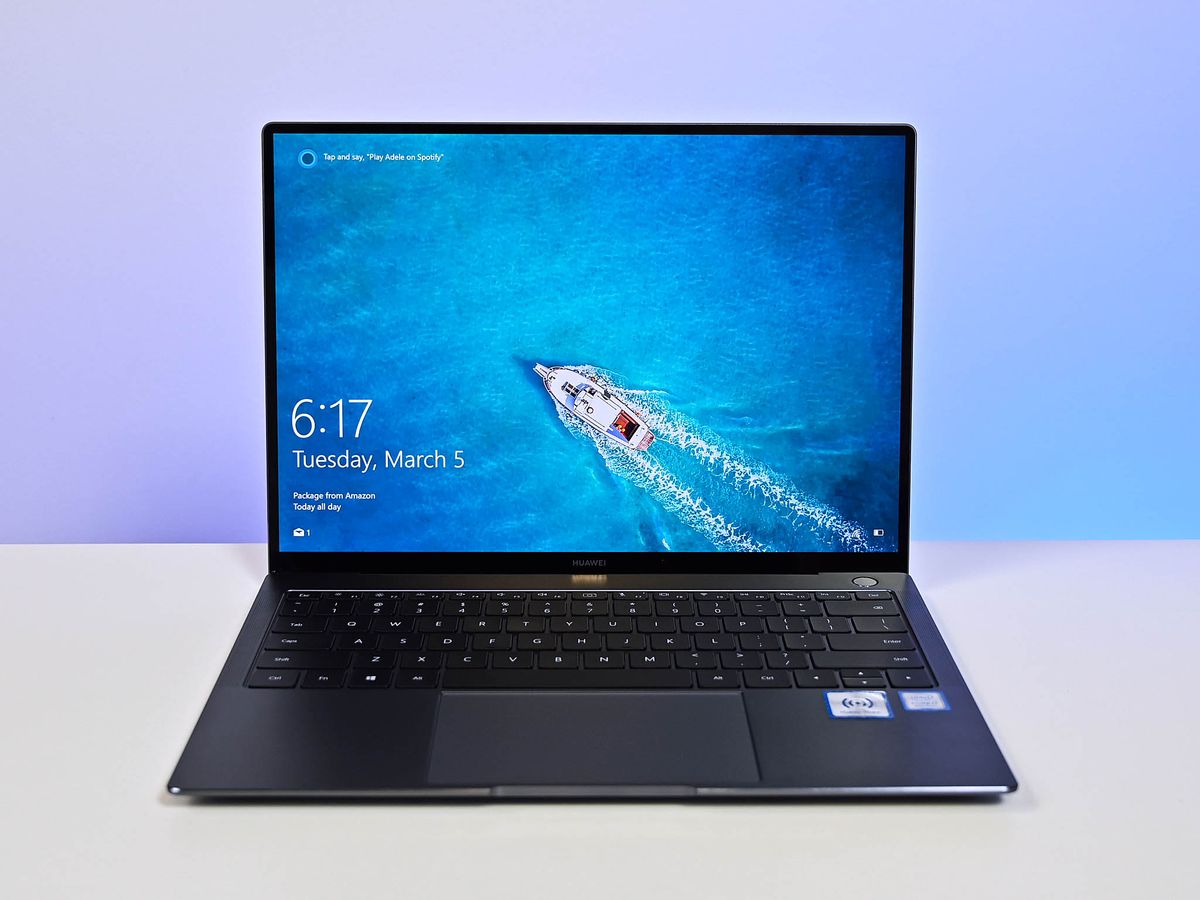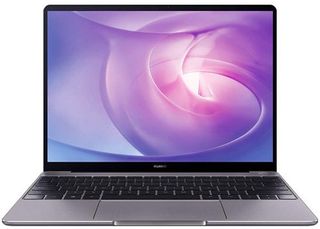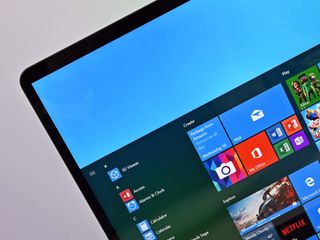Huawei MateBook 13 vs. MateBook X Pro: Which should you buy?
We're big fans of Huawei hardware, especially the company's range of Windows laptops. We know the strengths and weaknesses of both portable PCs and can recommend which is the best option for you.


The better MacBook
The Huawei MateBook 13 isn't a sluggish machine, thanks to the optional Intel Core i7 processor and 8GB of RAM. It's stylish, offers great value, and runs Windows 10 perfectly. The only issue is if you seek more RAM and storage capacity than what's available.
For
- More affordable
- Compact design
- Excellent 3:2 "2K" display
- Optional GPU and i7 CPU
Against
- Only 8GB RAM
- Limited storage options
- No 4K display

Amazing premium laptop
The MateBook X Pro is essentially the MateBook 13 but stretched a little and with the option for more capable internals. If you need to do some serious work while on the go, such as some video editing, this is the better option.
For
- Amazing 3:2 "3K" display
- Outstanding performance
- Exceptional value
- Optional GPU and i7 CPU
- Stylish but understated
Against
- No 4K display
- More expensive
Huawei has a sound premium laptop line-up. The MateBook 13 offers insane performance in a portable chassis, while the larger MateBook X Pro houses a larger display, up to 16GB RAM and additional storage for those who require a more powerful PC. Both share a similar design and it all boils down to what specs you need.
MateBook 13 vs. MateBook X Pro tech specs
Looking at just the name, you'd expect the MateBook X Pro to house an Intel Core i9 processor, 32GB of RAM, a dedicated RTX 2080 GPU, and a 4TB SSD. But this isn't the case and it's only really a slight upgrade from the excellent MateBook 13. It's not to say the MateBook X Pro is a bad laptop as it's not and is well worth considering if you need a slight bump in performance and the larger display.
The MateBook 13 is just that good.
| Header Cell - Column 0 | MateBook 13 | MateBook X Pro |
|---|---|---|
| OS | Windows 10 HomeWindows 10 Pro | Windows 10 HomeWindows 10 Pro |
| Processor | 8th Gen Intel Core i5 8265U8th Gen Intel Core i7 8565U | 8th Gen Intel Core i5 8265U8th Gen Intel Core i7 8565U |
| Display size | 13-inch | 13.9-inch |
| Display resolution | 2160 x 1440, 200 PPI, touch-enabled | 3000 x 2000, 260 PPI, touch-enabled |
| RAM | 8GB LPDDR3 2133MHz | 8GB LPDDR3 2133MHz16GB LPDDR3 2133MHz |
| Graphics | Intel UHD Graphics 620NVIDIA MX150 with 2GB GDDR5 | Intel UHD 620NVIDIA MX250 with 2GB GDDR5 |
| Storage | 256GB NVMe PCIe SSD512GB NVMe PCIe SSD | 256GB NVMe PCIe SSD512GB NVMe PCIe SSD1TB NVMe PCIe SSD |
| Ports | 3.5 mm jack2x USB-C | 3.5 mm jack2x USB-CThunderboltUSB-A |
| Windows Hello | Fingerprint reader | Fingerprint reader |
| Webcam | ✓ | ✓ |
| Battery | 41.7 WHr | 57.4 WHr |
| Weight | 2.84 lbs (1.27 kg) | 2.93 lbs (1.32 kg) |
Both Huawei MateBook laptops are amazing
The major differences between the MateBook 13 and MateBook X Pro are the display size, resolution, RAM, storage, ports, and GPU options. Starting with the display size, the MateBook X Pro has a 13.9-inch panel compared to the MateBook 13's 13-inch, which isn't a huge improvement, but does allow for an upgrade in both resolution and pixels-per-inch (PPI), from 2160 x 1440 and 200 PPI to 3000 x 2000 and 260 PPI.
Huawei's MateBook 13 has 8GB of RAM for both the Intel Core i5 and i7 models, which is enough for most PC tasks (and even some light gaming on the side), but the MateBook X Pro comes out on top with the option for 16GB, allowing Windows and more intensive apps to run flawlessly. The same goes for the GPU with the MateBook 13 rocking an integrated Intel UHD Graphics 620 GPU or a dedicated NVIDIA MX150 GPU with 2GB of VRAM.
Huawei made the MateBook 13 to be great and the MateBook X Pro to be even greater.
The MateBook X Pro can be kitted out with either the Intel 620 or an improved NVIDIA MX250 GPU with 2GB VRAM. This, combined with the option for a 1TB MVNe PCIe SSD, makes the larger laptop better suited for video editing and storing huge files like a collection of RAW photos. Finally, a complain we have with the MateBook 13 is the lack of Thunderbolt, which is present on the MateBook X Pro. You could even connect an external GPU for even more computing power.
Because the Matebook X Pro is a little larger, it can house more ports like a full-size USB-A, which can be used to connect hardware using older cables, and the aforementioned Thunderbolt port. Two USB-C ports are still present with one allowing for charge to be delivered to the larger 57.4 WHr battery.
Get the Windows Central Newsletter
All the latest news, reviews, and guides for Windows and Xbox diehards.

The issue with all this additional performance and list of features, you're paying more than you would for the MateBook 13. If your budget can stretch to accommodate the increase in cost, it's well worth considering, but if you simply need a laptop that looks stunning and runs well, the MateBook 13 is a great choice.
Go with the MateBook 13 if you want a Windows MacBook
There's a reason we keep going on about the MateBook 13. It's that good. Not only does it start at a reasonable price for the Intel Core i5 model, but you can kit the laptop out with a dedicated GPU, Intel Core i7 processor and 512GB of speedy flash storage.

Small and mighty
The MateBook 13 is the perfect MacBook running Windows 10. The gorgeous design, display, keyboard and amazing performance is coupled with an attractive price tag. Just don't try and do intensive work on the laptop as the 8GB of RAM and relatively slow dedicated GPU will quickly become an issue.
For those who need a larger display and more power
The MateBook X Pro isn't a huge upgrade on the MateBook 13, but it also doesn't cost considerably more. Choosing this laptop will bag you more RAM, a better GPU, more storage options, a larger display, and more available ports. This is at the cost of a price increase and a larger chassis.

A more powerful MateBook
Huawei took what worked with the MateBook 13, stretched the chassis, threw in a larger display and added more options for RAM and storage to meet the demands of professionals. If you need a portable PC that houses some capable hardware and looks the part, this is a solid option.

Rich Edmonds was formerly a Senior Editor of PC hardware at Windows Central, covering everything related to PC components and NAS. He's been involved in technology for more than a decade and knows a thing or two about the magic inside a PC chassis. You can follow him on Twitter at @RichEdmonds.